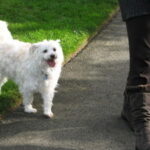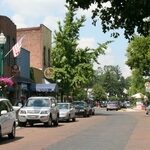This all starts with a collision or accident; between two or more cars, a car and a pedestrian, or even a car and a dog. All you have to do is stop to exchange information, right? Easy, right? Well, in some cities, up to 50% of collisions result in a hit and run. How can you help yourself? Get the license plate number of the other car. The best, if time permits and you are able, try to follow at a safe distance to see where the car goes. Also, get a physical description of the suspect if you can. Look for any distinctive marks or characteristics. Remember that hair color, length, and style can change so look at the face real well. Call the police as soon as practical to get them looking for the car. Many officers will go to the registered owners house and wait for the car if it isn’t already there.
The police report is crucial for the follow-up investigation. Make sure that the police document all pertinent information; including the suspect and vehicle description. Some field officers will go to the registered owners house right away, identify the suspect, impound the car, and the case will go through the proper criminal courts for adjudication. If the case is not solved, it will go into the hands of a busy Detective. Now the Detectives have the luxury of time, in most cases where the damage is minor, and also know how to make the various computer systems work for them better than the field officers. Detectives will attempt to locate, among others, the persons associated with the registered owner, criminal histories or those persons, phone numbers for the persons, and attempt to locate a photo of the person probably most responsible for the crime. Remember, the registered owner is not necessarily the person driving during the collision. Another important note is that the police cannot apprehend the registered owner of the car unless they were specifically involved in the collision or the cover-up thereafter. The police must go after the actual driver.
The victim(s) is responsible for doing some work as well. They must get a damage estimate for the damage done to their car. They also may have to go to the police station to view photographs of the possible suspect. This may take time, but in the end it is your case, and you should want the person to be held responsible for their actions.
If the suspect is not identified through the above means, a field follow-up is necessary to locate the driver. It is amazing how a knock on the door, at a most inopportune time for the residents, can yield results. The Detective has ways to find out who lives at the location and to get most of their photos, so, they are generally not surprised when they arrive at the location. Contacting any member of the household can lead to who was driving. Remember that hearsay is enough to build your case, and to eventually lead to your suspect. Documenting the follow-ups are necessary to lead to a successful prosecution. A good report with your prosecutor is also helpful when presenting the case.
If you are a victim and you want results right away, it’s not going to happen. Restitution will come in a long time after the case has been presented, then gone through the court proceedings. A restitution hearing will happen after the suspect pleads “Guilty,” or after a jury has found him the same. Your best bet is to have a good car insurance policy. If you just have liability insurance, your insurance company WILL NOT HELP YOU! Have full coverage, and uninsured motorist coverage as well; this will help you get back into your car faster.







